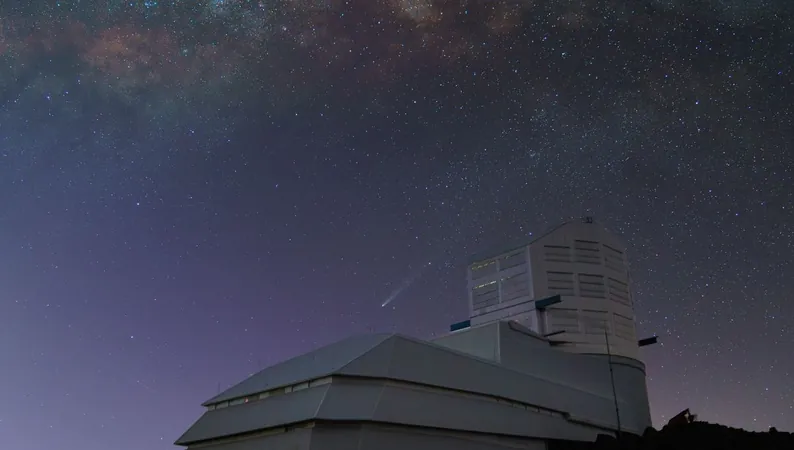
Prepare for a Cosmic Unveiling: The World’s Largest Digital Camera to Showcase Stunning Images This Monday!
2025-06-22
Author: Wai
Get Ready for the Reveal!
Mark your calendars for a monumental occasion in the realm of astronomy! This Monday at 11 AM ET (3 PM UTC), the Rubin Observatory will unveil its groundbreaking "first light" images and videos. You can catch this exciting announcement live on their YouTube channel, but if you miss it, don't fret—stunning visuals and clips will be shared soon after the live event.
A Game-Changer in Observational Astronomy
This isn’t just another telescope; it marks a transformative moment for observational astronomy. The ultra-high-definition images will provide phenomenal insights into the universe, creating the most detailed map of the night sky to date. Imagine capturing the detail of a golf ball from a staggering 25 kilometers (15 miles) away! This astounding camera takes a jaw-dropping 3200-megapixel image of an area seven times wider than the full Moon every 40 seconds.
The Marvel of Engineering
You might be curious; how big is the world’s largest digital camera? It’s truly colossal. It features two massive lenses: the primary lens measures an impressive 1.5 meters (5 feet) in diameter—record-breaking for its kind! The secondary lens, 90 centimeters (3 feet) wide, secures the focal plane, kept in a vacuum for optimal performance. Just for perspective, your average digital SLR camera lens is about 13 by 10 centimeters (5 by 4 inches).
The Precision of the Focal Plane
At the heart of this innovative camera lies the focal plane made up of 201 specialized CCD sensors, crafted for this project. Each pixel is only 10 microns wide, and the surface of the focal plane is so flat that variations are thinner than a human hair.
Unlocking Cosmic Mysteries
What does all this mean for astronomers? This powerful tool will enhance our understanding of the cosmos, particularly the elusive concepts of dark matter and dark energy. Researchers anticipate a dramatic increase in the cataloging of small Solar System objects—potentially identifying ten to 100 times more comets and asteroids. Expect the telescope to survey the entire southern sky every three to four nights, capturing fleeting astronomical events and contributing infinitely to our mapping of the Milky Way.
Join the Global Celebration!
This momentous event deserves to be celebrated! Planetariums and universities around the globe will host events for the unveil. Check out the Rubin First Look Watch Party website to find a location near you and be part of this cosmic milestone.

 Brasil (PT)
Brasil (PT)
 Canada (EN)
Canada (EN)
 Chile (ES)
Chile (ES)
 Česko (CS)
Česko (CS)
 대한민국 (KO)
대한민국 (KO)
 España (ES)
España (ES)
 France (FR)
France (FR)
 Hong Kong (EN)
Hong Kong (EN)
 Italia (IT)
Italia (IT)
 日本 (JA)
日本 (JA)
 Magyarország (HU)
Magyarország (HU)
 Norge (NO)
Norge (NO)
 Polska (PL)
Polska (PL)
 Schweiz (DE)
Schweiz (DE)
 Singapore (EN)
Singapore (EN)
 Sverige (SV)
Sverige (SV)
 Suomi (FI)
Suomi (FI)
 Türkiye (TR)
Türkiye (TR)
 الإمارات العربية المتحدة (AR)
الإمارات العربية المتحدة (AR)